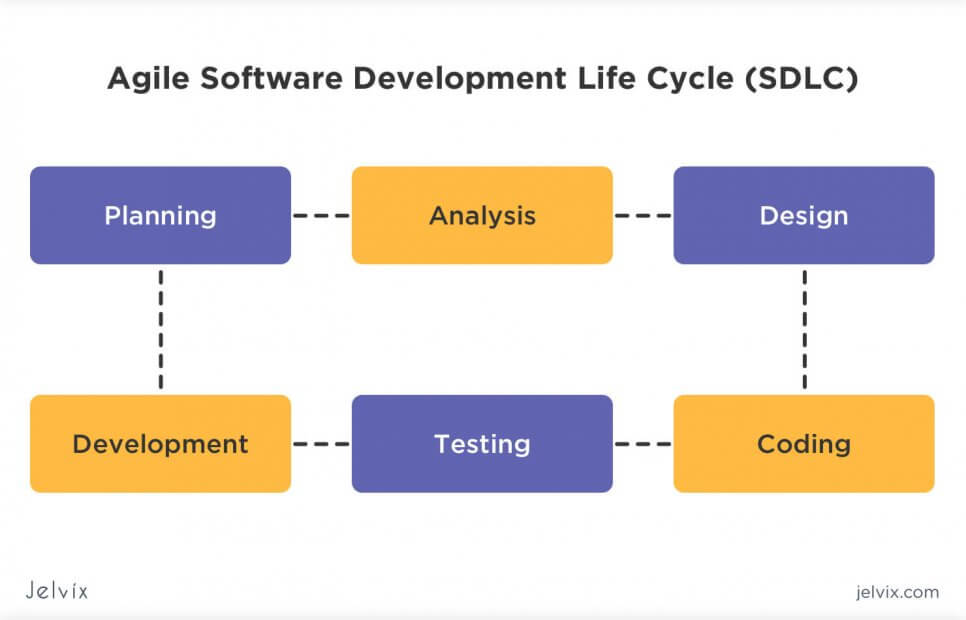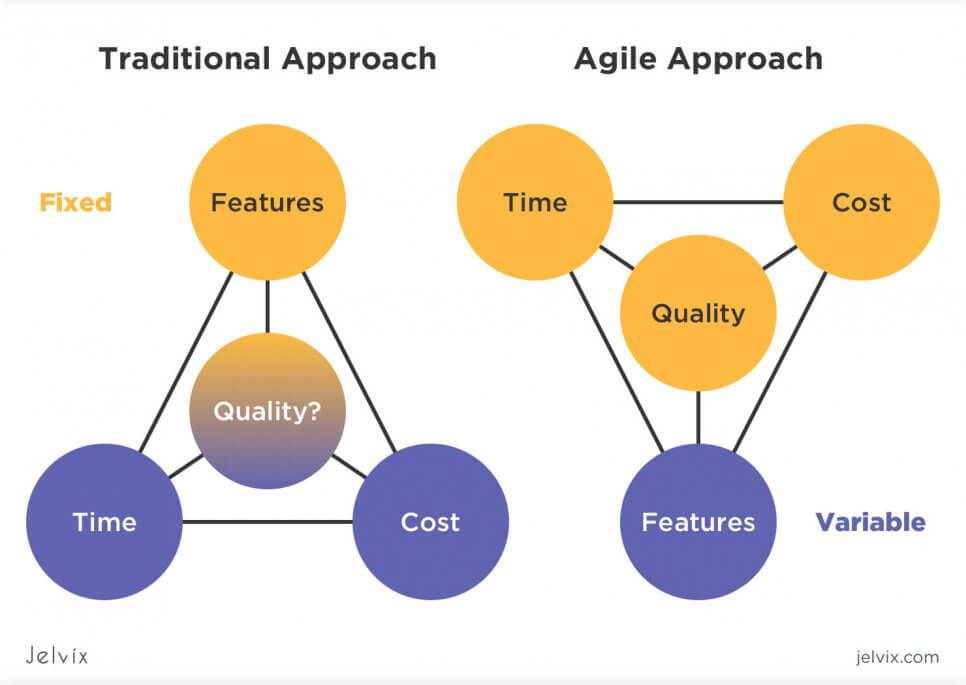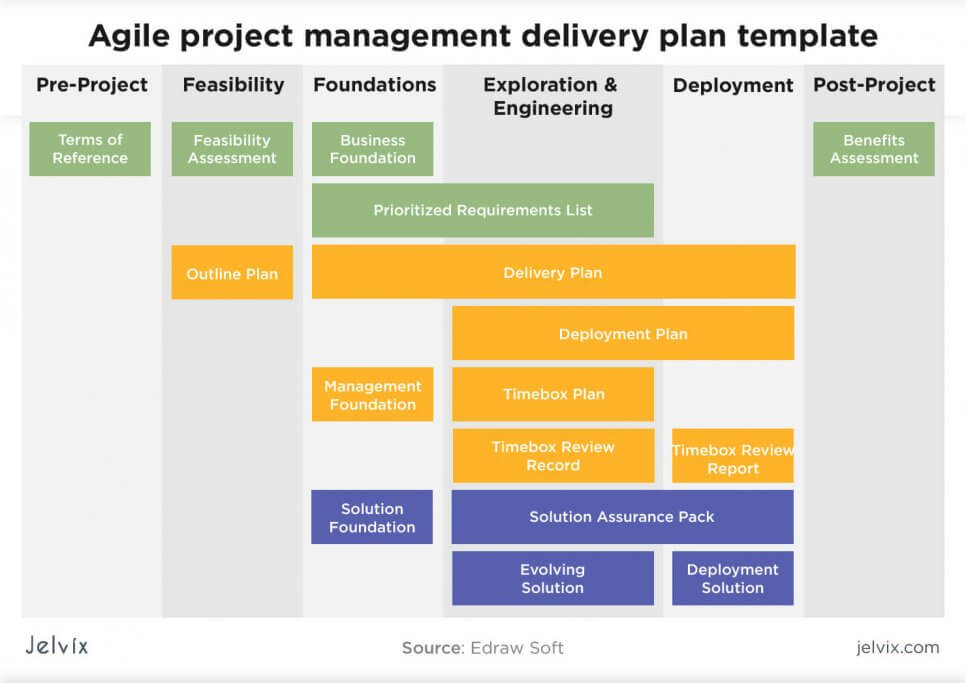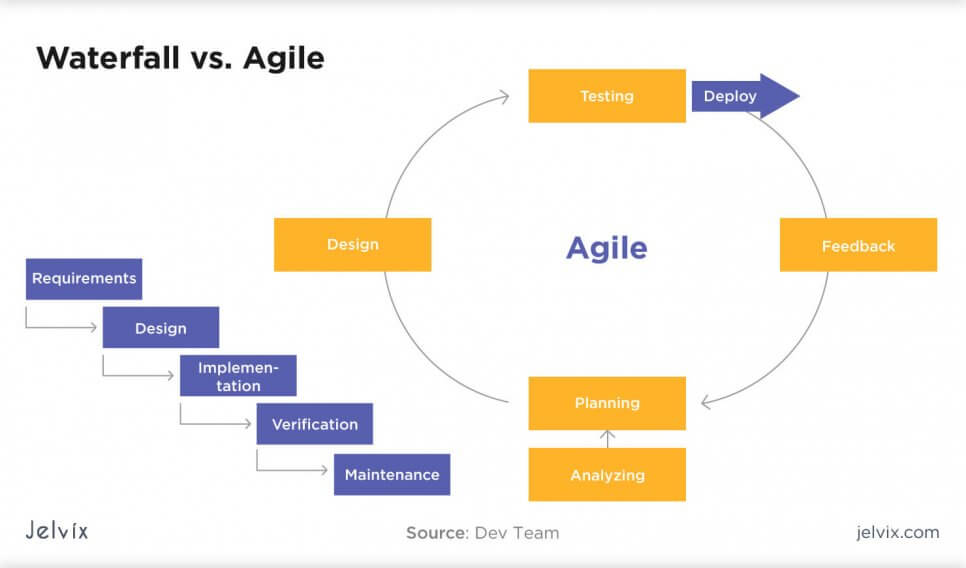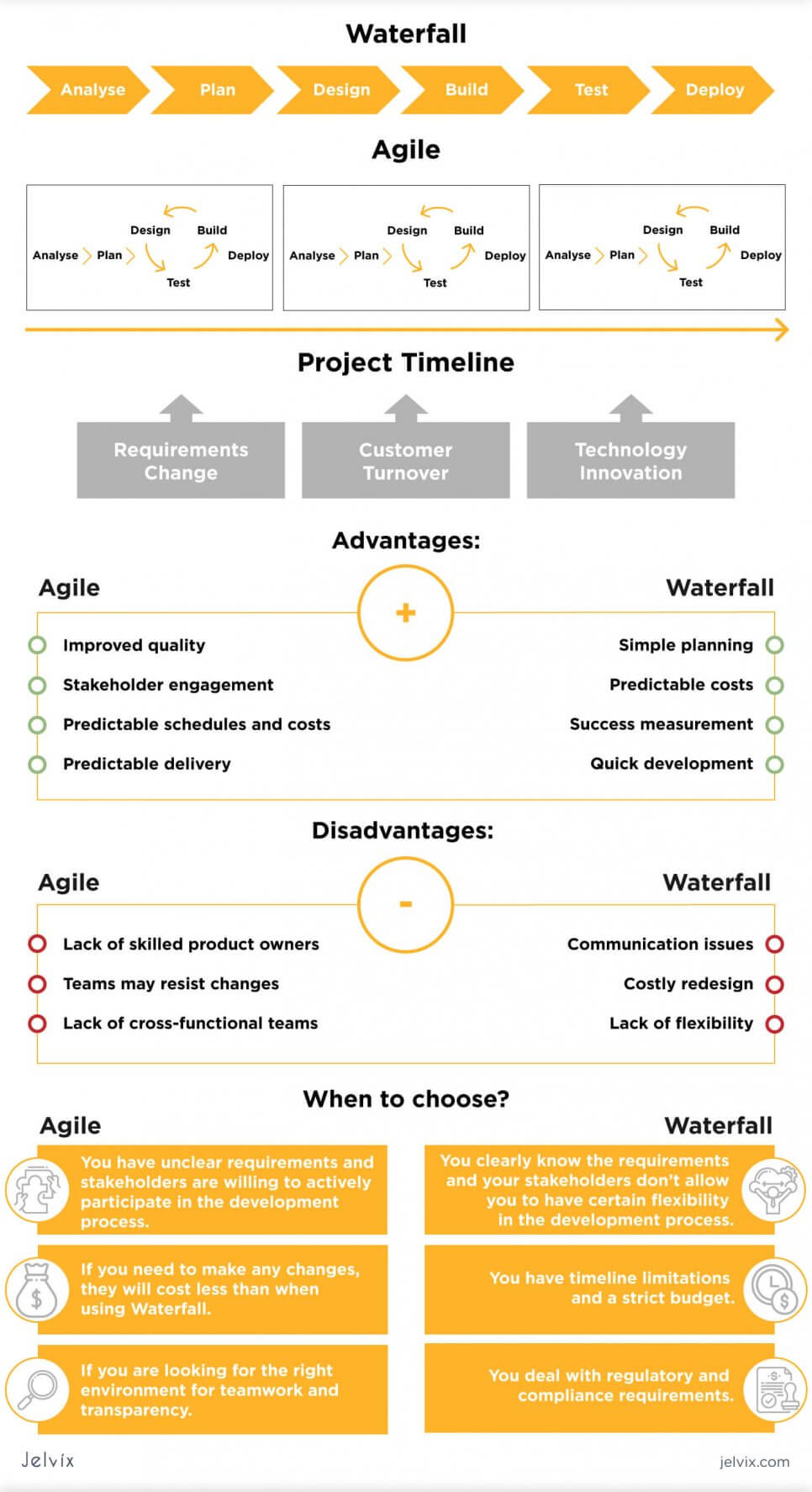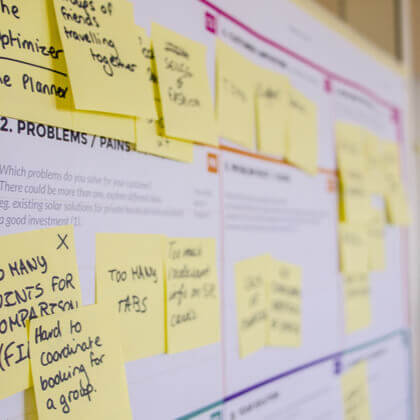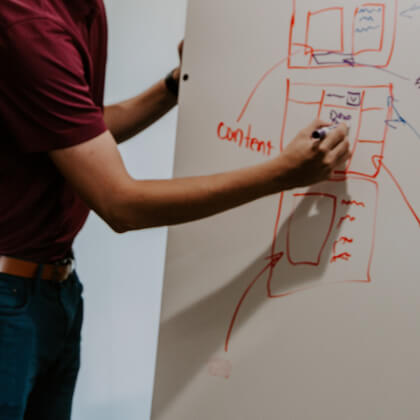Project management has existed for hundreds of years, it just took different forms. People improved their gathering and hunting practices, their building methods, etc.
Today, people build smart cities, work on global projects, and continue to come up with more efficient methods of production and development. The methodology is an integral part of numerous processes, that’s why choosing the right methodology is so important.
Although we have more sophisticated tools than ever, the success of any project still depends on our ability to choose the right methodology.
According to statistics, the success rate of IT projects is about 30%, and one of the main reasons why projects fail is that people cannot identify their potential customers’ needs and determine milestones that would allow them to effectively measure the success of the project.
However, not only IT companies face tech-related issues. Given the role of technology in our lives, every company has to deal with IT projects at some point.
For instance, any company might need to develop its own app or to redesign its database infrastructure, switching from legacy systems to the cloud. That’s where choosing the right methodology becomes especially important.
Agile is, probably, the most popular iterative approach in the software development industry. However, it doesn’t mean that Waterfall and other older methodologies are no longer relevant. Both of these approaches can be useful in project management.
The right answer to the Agile vs. Waterfall question depends on the scope of the project and its type. You may choose one approach or another, or you may also combine both. In this article, we will provide you with some general information about these approaches so that you can choose the one that fits your needs and objectives.
What is the Agile methodology?
Agile is a type of project development organization that is popular in software development. It is based on collaboration between cross-functional and self-organizing teams, as well as between teams and customers.
The main principles of Agile are described in the Agile Manifesto. This methodology appeared as an alternative to traditional methods of development, such as Waterfall.
The IT industry is extremely competitive, and the main reason is that software can be upgraded quickly, and older versions of software quickly become obsolete.
Therefore, developers should improve their products all the time to withstand competition. IT teams should be flexible, and sequential approaches like Waterfall don’t always work well in such an environment.
The history of Agile began in the 1990s when the software development industry faced a crisis. This crisis was dubbed “the application delivery lag” and “development crisis.”
Many companies realized that they could not work fast enough to meet their customers’ demands because the traditional development methods were based on a timeline principle. “The development process was sequential, and customers couldn’t see the product until the final stage of the process.
As a result, when an app was ready, the objectives of the project and customers’ requirements had already changed,” explains Velma Barton, a project manager at a writing service reviews website Best Writers Online.
Agile introduced a completely different approach. The Agile Manifesto includes 12 main principles aimed to improve software development by using an understandable, measurable structure and team collaboration.
Agile also focuses on recognizing changes and iterative development. Here are some of the main principles and values of Agile:
- Working software is more important than clear documentation;
- Interaction and individuals are more important than tools and processes;
- Customer collaboration is more important than contract negotiation;
- A timely response to changes is more important than sticking to a plan;
- Working software should be delivered quickly;
- Requirements can be changed during the development process;
- Customer satisfaction is achieved through continuous software delivery;
- Developers and stakeholders collaborate throughout the development process;
- The working process is based on trust, support, motivation, and face-to-face interactions;
- A consistent pace of development.
The main advantages of Agile
- Improved quality
One of the main advantages of Agile is the better quality of the product. Given that the project is broken down into units that are easy to manage, teams can focus on collaboration and testing.
Besides, the quality improves thanks to continuous testing and frequent builds because teams can quickly detect bugs and fix them. - Stakeholder engagement
Agile also provides numerous opportunities for team and stakeholder engagement. Given that stakeholders are involved at every stage of the development process, teams can better understand the business’ vision and build trust. - Predictable schedules and costs
The Agile development process consists of so-called sprints, and each sprint has a fixed duration. Therefore, the development process involves fixed schedules, and companies can better understand how much each feature will cost. - Predictable delivery
The fixed schedule enables developers to deliver new features quickly. They can also release beta versions earlier if they can deliver enough business value.
Disadvantages of Agile
Although Agile offers numerous benefits, it is also associated with certain challenges. According to research, both small and large companies often face difficulties adopting Agile because of the following three challenges.
- Lack of skilled product owners
Companies have been using the Business Requirements Document (BRD) for many years. Although it has some drawbacks, people are familiar with it.
However, many people, including business analysts and stakeholders, are not familiar with Agile. They may not understand user stories, so they don’t want to switch from the BRD to something else. Quite often, they are afraid that they won’t be able to control the development process without this contract.
Agile teams also use application lifecycle management tools (ALM), turning user stories into development tasks, while BAs and stakeholders may still use Microsoft Excel and Word, which don’t allow for effective collaboration. - People’s behavior
It’s not always easy to change the way people work because you have to change the culture and habits that have become an integral part of the development process. Teams may resist changes, and you should be ready to address this challenge. - Lack of cross-functional teams
Given that the Agile Manifesto addresses all members of development teams as “developers,” people often think that Agile teams consist of coders. The truth is that the Manifesto refers to product developers who perform any cross-functional role.
Cross-functional teams should be built around mapping the customer value stream, being able to accomplish all the necessary tasks with no help from the outside. Cross-functional teams are not a new concept, but many companies still struggle to adopt it.
The Agile development cycle
1. Project initiation
This stage is also called the envision or inception phase. Stakeholders and the product owner discuss the project vision and evaluate the ROI. At this stage, companies don’t focus on details. It involves assigning team members and planning the necessary resources. This step also helps determine the economic feasibility of the project.
2. Planning
During this stage, business analysts and technical project managers meet with product owners or sponsors and define clear objectives. They should determine who they’re making their product for, as well as what potential users may want from the product and why. Teams also define milestones and estimate risks, prioritizing different details depending on their business value.
3. Development
After the team gets feedback from stakeholders and product owners, they start to develop the product itself. In Scrum, which is one of the most popular Agile methodologies, the product is delivered in incremental phases that are called sprints.
Every sprint is intended to bring value to a current version of the product. The first version must go through numerous revisions, getting improved functionality and new features. Every cycle includes testing, and the final product should also pass the final testing.
There are also other Agile methodologies, which are based on different approaches. For instance, the Kanban methodology doesn’t rely on sprints, and the development process is based on separate tasks.
4. Production
At this stage, the product is used by consumers, so the team has to monitor the usage, detect bugs, and fix them. The handover and other final processes depend on the type of product.
5. Retirement
This is the last stage of the Agile development cycle. At this stage, the product gets pulled out from production so that customers can migrate to a newer version or alternatives. There are many reasons why products get retired. The most common reason is that the company has a newer release. However, the product may also turn out to be not cost-effective.
How Agile deals with software requirements
Strictly speaking, there is no such thing as requirements management in Agile because there is no set of procedures or definitions that you could use to make your requirement management Agile.
Agile companies use countless methods, tools, and concepts to improve the quality of requirements and enhance their clarity.
The reason why there’s no unified requirements management system in Agile is the very nature of this methodology that prioritizes flexibility, collaboration, and communication over tools and documents.
“Agile companies use anything that works for them. The requirements management lifecycle depends on the scope of a project, which in turn impacts its cost,” explains Janie Walker, a project manager at a writing service reviews website Online Writers Rating.
You can create a requirements backlog based on user stories, and then evaluate the requirements based on your objectives and strategy.
After this, the general requirements should make it to the product backlog through the decomposition and a grooming phase. This way, you can turn a set of requirements into features that will be included in release backlogs and then formulated as tasks.
What is the Waterfall methodology?
Waterfall is a more traditional, linear approach to project management. In this case, the requirements of stakeholders and customers are collected at the beginning of the project and serve as the basis for a project plan. The Waterfall approach was created in 1970 and quickly became popular in different industries because of the simplicity of implementation and logical sequencing.
The Main Advantages of Waterfall
Companies choose the waterfall model for many reasons. Here are some of the main advantages of this approach.
- Simple planning
Waterfall is easier in the context of planning because all the requirements are determined at the first stage of the development cycle. - Predictable costs
You can determine clear deadlines and estimate your resources and the cost of the project even before the software development process begins. - Success measurement
Given that you have a clear set of requirements, you can create a clear system of milestones to evaluate your success as you go through different stages of the project development cycle. - Quick development
The development process takes less time because customers don’t add new requirements. However, you should keep in mind that you may need to change a lot after the final product is released.
Disadvantages of Waterfall
- Communication issues
Quite often, it’s difficult for customers to communicate all of their needs and expectations at the very beginning of the project. - Costly redesign
If customers are not satisfied with the product during the verification stage, you may spend a lot of money redesigning the code and starting all over again. - Lack of flexibility
The IT industry quickly evolves, and the Waterfall model doesn’t provide the necessary flexibility so that you can quickly adapt to any unforeseen events.
Despite all the disadvantages of Waterfall, this approach can be a great choice if your customers know exactly what they need, as well as when dealing with familiar tasks. For instance, Waterfall is often used in medicine, the IoT industry, aviation, etc.
Development stages of Waterfall model
Usually, this methodology involves five to seven phases. Every phase only begins if the previous step is completed. Companies use different names of these phases. However, here is what the traditional Waterfall stages look like.
1. Requirements
The requirements should be gathered at the very beginning of the project. All the other phases are planned without any participation of customers.
2. Design
This step includes two subphases, which are logical design and physical design. The first subphase is based on brainstorming and searching for possible solutions. After this, the physical design subphase turns the theory into clear specifications.
3. Implementation
At this stage, developers create the actual code based on the specifications formulated at the beginning.
4. Verification
Now customers can review the completed product and determine whether or not it meets their initial requirements.
5. Maintenance
During this stage, costumes are actively using the product. This phase also involves fixing bugs and features that don’t work correctly.
How Waterfall deals with software requirements
There is a big difference between Agile and Waterfall when it comes to requirements management. While Agile requires you to change the requirements all the time depending on the input from customers and stakeholders, Waterfall provides you with a fixed system of requirements that is determined during the initial phase of product development. The only way to change the requirements is through formal requests.
What is the difference between Waterfall and Agile?
As you can see, Waterfall and Agile are two completely different approaches to product development. Waterfall is a sequential linear model where everything happens during a particular phase of the project, and the phases follow each other in a strict order.
Agile is a flexible model that involves a continuous development process and testing. Waterfall is a well-structured model, while the main reason why Agile is so popular is the flexibility it offers.
Waterfall allows you to build a sequential design process, while Agile is an incremental tactic. Agile requires you to include testing as a part of the design process, while Waterfall lets you test the final product after the development stage is completed.
Both of these approaches can be very useful, depending on the type of your project and its scope. Therefore, you should determine your objectives to answer the Waterfall vs. Agile question.
Read more about the most common software development strategies and take a look at their benefits and drawbacks.
How to choose the right methodology for your project?
Waterfall is a more traditional approach, but it doesn’t mean that it’s obsolete. In fact, it’s still very popular among teams of different kinds. According to research, about 53% of companies use Waterfall either constantly or occasionally. To choose the right methodology, you should clearly understand the advantages and disadvantages of both approaches.
When to choose Waterfall?
We recommend that you consider using the Waterfall approach if you clearly know the requirements, and your stakeholders don’t allow you to have a certain flexibility in the development process.
Waterfall is also a good solution if you have timeline limitations and a strict budget, as well as when dealing with regulatory and compliance requirements. Therefore, Waterfall is common in compliance-heavy industries like aviation, healthcare, food processing, etc.
When to choose Agile?
Agile will be a better choice if you have unclear requirements and if stakeholders are willing to actively participate in the development process. If you need to make any changes, they will cost less than when using Waterfall.
This approach also creates the right environment for teamwork and encourages transparency. All these features of Agile determine its areas of application. For instance, Agile is extremely popular in software development.
Final thoughts
When choosing between the Waterfall methodology vs. Agile, businesses should analyze the features of both of these approaches and determine which one is more likely to meet their objectives and to fit their goals. You can use Waterfall if you’re dealing with strict requirements and familiar tasks, or you may choose Agile if you need more flexibility.
You can also combine and merge these two methodologies in different ways if you realize that the pure Agile or pure Waterfall cannot fulfill your needs. 75% of companies that use Agile note that they like this approach because it allows them to deliver products quicker, and 64% emphasize the ability to manage changing priorities.
However, Waterfall isn’t going to disappear anytime soon, so we recommend that you choose a model that can work well not only for others but also for your company.
Aaron Swain is a writing specialist who is currently working in the writing service reviews company Best Writers Online. He is passionate about marketing and SEO. He expands and improves his skills throughout the writing process to help and inspire people.
Have a project in mind?
Extend your development capacity with the dedicated team of professionals.




